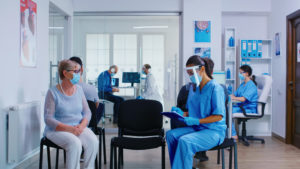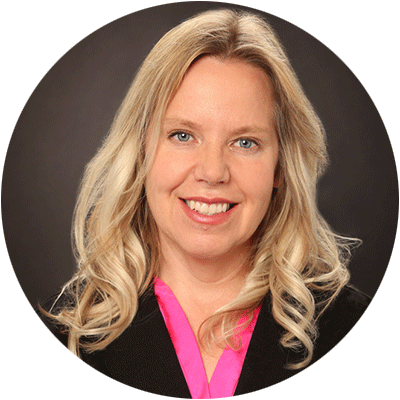
It’s hard to believe that a little over a month ago, we were planning for our annual Missoula Market Watch Event. At the event, we showed that most indicators that Missoula’s commercial real estate market was moving forward with controlled growth and at a healthy place. All of our real estate asset types were performing well, with steady rent growth and occupancy rates. No bubbles or busts on the horizon. The only thing that could interfere was a ‘black swan’ event that disrupted the economy.
Cleary, COVID-19 is that disruption. It has impacted every aspect of our economy, including commercial real estate. As of this writing, it is hard to fully predict the impact of this crisis, as there is no end date we can bank on yet. What we do know is that coming into the crisis, commercial real estate was in a healthy state, both locally and nationally. Uncertainty in the economy has a ripple effect across all types of commercial real estate, as the businesses that occupy CRE are hurt severely decreased revenues. As a result, economic shocks hit all types of real estate by reducing demand for commercial space. However, some types of commercial real estate provide safer investment options in turbulent economies.
Medical office is one type of investment that typically proves resilient through economic downturns. Nationally, large private equity investment groups are turning to medical office, moving away from higher risk investments like hospitality and retail. Nationwide, medical office has experienced low vacancy rates- below 11% — in step with record high rents and limited new supply. In short, it’s a product in high demand, with a solid outlook in the long term. While no investment can truly be called “recession-proof,” medical office is as “recession-resistant” as they come.
Let’s take a look at why we are still seeing transactional activity in this market across the US.
1. Growing Long Term Demand
There are strong demographic trends driving the growth of medical office across the US. The US has a growing population of older residents who consume more health care services. This has been coupled with a change in how consumers receive services. More and more, health care is taking place in outpatient centers that are not physically connected with hospitals. Health care is increasingly being dispersed out into communities in the form of medical office complexes or even retail locations. This helps providers to decrease costs and offer more convenient care to residents. From an investment perspective, it also drives demand for medical office space. The chart on the right is from CBRE’s 2019 report on medical office which shows the clear trend toward outpatient care centers (accessible here).
Additionally, alternative medicine is growing in popularity, with specialties such as chiropractic, massage therapy and acupuncturists needing office space. These treatments are increasingly covered by insurers, and are coverable under HSA’s making them more accessible and popular than ever. The number of chiropractors and massage therapists in the US has increased by 73% in the past 10 years.
2. Medical Providers Are Stable Tenants
Medical providers tend to be stable tenants with steady business models who often sign longer term leases. In general, office users sign 3-5 years leases, whereas medical practices will often look to sign 5-10 year leases. Because patients will grow accustomed to visiting a provider in a particular location, it is usually disruptive to a medical practice to move from that location. As such, medical tenants tend to stay in place long term.
3. Medical Services Are Essential
Medicine is typically an industry that operates without disruption even in unstable times. COVID-19 has shut down some offices temporarily, but is expected that business will resume quickly as patients catch up on deferred care. Additionally, some services such as cancer treatments, diagnostics, lab services and pre-natal care must continue regardless. Medical services are generally not discretionary. In the US, only about 10% of health spending is made out of pocket, with the balance coming from public and private insurance programs. This means that, in general, medical service providers can count on having revenue even as the rest of the economy struggles.
4. Room For Innovation

Medical Shared Office Space
In some markets, a new model of medical space is emerging as a derivative of the co-working model. Medical care professionals have the ability to lease single exam rooms within a building. Leases are available from a daily model thru longer term. Spaces include a receptionist, access to medical supplies, furnished exam rooms and even procedure rooms. This allows for physicians to focus on their patients without having to deal with ordering supplies, scheduling maintenance, or staffing a reception area. Viva Med Suites in Arizona is a great example.
Telemedicine
Telemedicine allows for physicians to use the internet to enhance their practices. In some cases, it is as simple as Skype call to cover a birthing plan between an OB-GYN and an expectant mother. In other cases, it is used as a way to connect physicians and their patients to a wider resource network. For example, X-rays taken at a small rural office can be evaluated in real time by a radiologist at a major hospital many miles away. Both of these scenarios impact real estate- the first requires that a facility has a room with the technology to enable high-definition video and online consultations in a professional setting without interruption. The latter allows for more geographic dispersion of medical office as access to specialists via telemedicine means that patients can be treated for more conditions locally, with less need to travel to major healthcare facilities. Most legacy medical offices do not possess this capability, leaving opportunity for investors to make those upgrades.
Missoula Outlook
The outlook for medical office demand in Missoula and surrounding areas is positive. The region’s rapid population growth is expected to continue. Importantly, Missoula acts as a regional medical hub, with people traveling up to 3 hours in some cases to meet with specialists located here. Western Montana is also experiencing the same demographic changes that the US at large has seen as the population ages. Healthcare employment in Missoula County has grown by 47.8% from 2007 to 2017 per the US Census. Additionally, demand from residents in surrounding counties offer opportunities as telemedicine grows more prevalent.
It’s worth noting that two local surgeons– Northern Rocky Orthopedics and Bone & Joint– have both recently completed large expansion projects for their facilities off-campus from a hospital. Increasing demand for their services has resulted in increased demand for high quality medical space. Other speciality providers are actively pushing ahead with their own projects as well along West Broadway.
For investors seeking a safe harbor in a storm, a well-managed medical office investment provides that shelter.
To discuss strategies for strengthening your own commercial real estate investment portfolio, including medical office, you’re invited to contact Matt Mellott, CCIM or Claire Matten, CCIM. Using proprietary market data and proven investment analysis methods, Matt and Claire can help guide you stabilize and grow your return even through an economic disruption.




